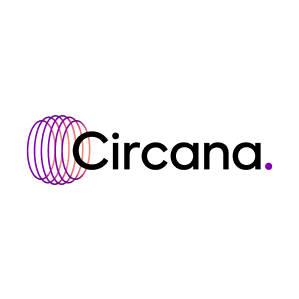- Circana

- Aug 12
- 8 min read
Updated: Aug 21
Table of Contents:
Marketing Mix Modeling (MMM) is a statistical approach to evaluate the performance of marketing support in driving brand sales. It enables data-driven decisions for optimizing budget allocation and maximizing IROI (incremental return on investment). MMM is ideal for brands with sizable marketing budgets spread across multiple marketing channels like TV, Social Media, Print, Digital, RMNs, Retail Search, Shopper, and Promotions.
The goal is to use insights from the analysis to adjust strategies and drive incremental growth. At Circana, we offer tailored measurement solutions to help brands identify the most effective tactics and budget shifts. We recommend MMM for brands seeking to leverage granular data to enhance marketing performance and improve how they measure and grow their IROI.
What's the Difference Between Incremental ROI and ROI?
Incremental ROI measures the return generated solely by the incremental volume driven by a specific marketing driver. In contrast, traditional ROI may include all volume that correlates with a marketing activity, regardless of whether it was truly caused by it.
To accurately isolate Incremental ROI, it's essential to use robust control variables. These control variables help account for confounding factors—variables that may influence both the marketing input (independent variable) and the outcome (dependent variable).
In CPG modeling, it's especially important to control for key factors such as:
Trade promotions
Pricing changes
Distribution shifts
Competitive activity
These factors can only be effectively controlled for when using store-level (disaggregated) data. If the data is aggregated—such as at the DMA, RMA, or regional level—these nuances are lost, and the model cannot properly isolate the true incremental impact. As a result, the ROI calculated from aggregated data may not reflect a truly incremental ROI.
How Does Marketing Mix Modeling Help Brands Build IROI?
Marketing mix modeling helps brands improve their incremental return on investment (IROI) by providing a comprehensive view into the performance of their marketing efforts. With a complete view of performance, brands can make informed decisions on how to invest their ad spend more effectively across different marketing channels. For brands with ambitious strategic goals who are looking to invest more in their marketing efforts, Marketing Mix Modeling can provide a roadmap of how and where to invest their spend in order to reach those goals.
Marketing mix modeling run by an independent company enables brands to own their measurement process from an unbiased and complete view, instead of having individual platforms dictate overall strategy based on their limited data. Modeling combines sales data from brick-and-mortar store-level data with e-commerce data so brands can identify growth opportunities. Likewise, data from agencies, platforms, and advertisers is consolidated to provide brands with a comprehensive view of their marketing efforts.
Marketing mix modeling is only as effective as the data behind it. For meaningful results, brands need both quality data and the ability to act on insights. Circana’s platform combines comprehensive data, industry expertise, and actionable analytics to help brands measure performance and justify marketing investments with confidence.
When Should A Brand Consider Using Marketing Mix Modeling?
Marketing Mix Modeling (MMM) is a powerful solution for brands aiming to drive long-term, incremental growth. By analyzing current marketing tactics and linking them to key performance indicators, such as sales or other business outcomes, Marketing mix modeling provides actionable insights that help optimize marketing investments.
MMM is particularly effective for brands employing at least five to six distinct marketing channels. It enables these brands to identify opportunities to scale or reduce media spend based on data-driven insights.
What Size Marketing Budget Should Brands Have to Run a Marketing Mix Model?
To ensure a worthwhile return on investment, brands should ideally have a marketing budget that is at least 50 times the cost of the MMM initiative. Meeting this threshold typically indicates strong readiness for the approach.
MMM is also a smart investment for brands pursuing aggressive growth, strategic transformation, or increased marketing spend. It helps clarify the level of investment required to meet growth objectives and ensures that resources are allocated efficiently.
When Should Brands Run Marketing Mix Modeling?
Marketing mix modeling should be conducted after a marketing period closes, as it takes at least one month for data to become available. For this reason, brands need to be proactive about conducting Marketing mix modeling rather than being reactive. Different measurement solutions are better suited to making changes on the fly or understanding the impact of how budget changes will impact an existing marketing strategy.
When Is Marketing Mix Modeling Not the Right Call?
Marketing mix modeling is primarily designed for medium-to-large-sized brands that use several marketing tactics. One of the most common barriers to entry into Marketing mix modeling is the lack of marketing platforms in use, sometimes due to the size (or lack thereof) of the brand's marketing budget. If your brand uses fewer than 5 separate marketing tactics (ex., TV, radio, print, e-Commerce, consumer promotion), then Marketing mix modeling will likely be less effective and lead to a smaller return on investment compared to brands that use many different marketing tactics.
Marketing mix modeling can, however, be beneficial for brands with smaller marketing budgets in cases where there is a strategic desire to accelerate growth, as MMM helps brands discover the efficient way to grow and understand the investment needed to reach a growth target. Marketing mix modeling may also not be the right decision for brands that need to make quick changes. These brands would benefit from measurement tools that focus on optimizing campaigns by activating valuable audience segments.
Media Mix Modeling vs Marketing Mix Modeling - Which is Better?
Media mix modeling and Marketing mix modeling are similar analytical tools with one key difference: Media mix modeling only accounts for media impacts (not total marketing impacts), while Marketing mix modeling accounts for all marketing tactics, regardless of channel. For this reason, Media mix modeling lacks critical data, skewing results, and leading to improper or less valuable insights. While the majority of marketing spend is in traditional media channels, a Media mix model ignores the marketing spend in retail media and consumer promotion. At Circana, our goal is to provide complete data so that the decisions a brand makes are made with a complete view and understanding of how they will impact incremental return on investment (IROI).
What Are the Benefits of Marketing Mix Modeling?
Marketing mix modeling is beneficial for companies and brands that want to measure and improve the IROI they are getting from their marketing tactics. Marketing mix modeling is a great tool for companies that are looking for evidence and opportunities to revisit strategies and tactical changes, such as spending more or less on a specific tactic, changing an audience or target group within a platform, or requesting more money to fund a certain brand. High-quality, accurate marketing mix models empower companies to make informed resource and budget allocation decisions to increase their return on investment from the different marketing channels they use.
What Do Marketing Mix Models Show Advertisers?
Marketing mix models enable brands to predict future performance and make strategic steering decisions to consistently improve performance by modeling the past. A marketing mix is backed by data, analytics, and experimentation. It allows marketers to simulate scenarios, forecast results, and make informed decisions that drive business outcomes. While Marketing mix modeling does not generate any tangible value on its own, it points companies in the right direction as far as how they can maximize the return on investment they are getting from their marketing efforts. A brand’s first marketing mix model will typically result in the largest impact, as understanding optimization opportunities tends to lead to immediate improvements in incremental return on investment (IROI). From there, consistent models ensure that a brand is always making the most optimized decisions for its marketing efforts.
How is Circana’s Marketing Mix Solution Different from Competitors?
Circana leverages store-level data to build highly accurate Marketing mix models, delivering insights that truly reflect market dynamics. By analyzing data at the store level, we can precisely account for critical factors like pricing, trade promotions, and competitive activity, ensuring these effects are correctly attributed.
This level of granularity is paired with our flexible solutions designed to meet each organization's unique needs. You can use our AI-enabled tools to run your own mix models or partner with our expert consultants for a managed solution. The platform adjusts to fit a brand’s existing workflows and level of performance while maintaining precision and speed.
Whether managing a single brand or an entire portfolio, our solution revolves around your needs as they evolve. This balance of control and collaboration supports faster learning, better resource allocation, and more confident marketing investment decisions.
Without this level of granularity, models risk misattributing these influences, leading to distorted conclusions and misguided strategies. Store-level modeling isn’t just a technical upgrade; it’s the difference between actionable truth and misleading noise.
What Is the Difference Between DMA-level and Store-Level Modeling
DMA-level (designated market area) modeling utilizes a geographic region, rather than examining data at the individual store level. By sacrificing this granularity, the accuracy of the insights from these models is also sacrificed. In a comparative analysis, Circana found that DMA-level produced inaccurate results:
Model Fit (R-Square) - In one out of three test cases, the DMA-level model produced an R-square value almost 50% lower than the corresponding store-level model; which references the accuracy of the relationship between independent variables (marketing strategies) and dependent variables (outcomes).
Forecast Accuracy (MAPE) - Across the same test cases, the DMA-level model consistently underperformed in forecast accuracy, with Mean Absolute Percentage Error (MAPE) approximately 1–1.5 percentage points higher than the store-level model.
Media and Base Contribution Analysis - In 33% of the test cases, the DMA-level model underestimated media contributions by an average of 2.5 percentage points, while simultaneously overestimating base contributions by 12 percentage points.
Frequently Asked Questions about Marketing Mix Modeling
What is Marketing Mix Modeling?
Marketing mix modeling is an analytical tool that helps companies, brands, and advertisers understand and quantify the impact of their marketing tactics (also known as their “marketing mix”) on sales or other target KPIs. Marketing mix modeling enables companies to break down how each of their marketing tactics are performing and affecting sales so they can make informed decisions on resource allocation and marketing spend.
What is Incremental Revenue?
When brands measure the success of their marketing efforts it can be done holistically or incrementally. Incremental revenue refers to a method of measuring how additional revenue comes from specific business activities. This can include product launches, marketing campaigns, or other strategies. In order to effectively measure incremental revenue you need to be able to separate the revenue that would have been generated without a specific action from the revenue that is attributable to that action. Understanding the incremental nature of your strategies is often part of Marketing Mix Modeling which looks at IROI or Incremental Return on Investment.
What is an Example of a Marketing Mix Model?
For a simplified example of a Marketing mix model, picture a brand that divides its budget between TV advertising, print advertising, and advertising on a popular e-commerce website. A marketing mix model combines sales data with advertising data to identify opportunities to reallocate spend across marketing vehicles, and to improve the performance of an individual marketing vehicle. From this data, a brand could extrapolate that their most effective marketing tactic is e-commerce advertising and make the appropriate adjustments. In practice, marketing mix modeling is much more granular, combining data inputs from a large variety of sources to identify optimization opportunities.
What is Media Mix Modeling?
Media mix modeling is a statistical tool that is closely related to Marketing mix modeling, but there are some key differences between the two. Media mix modeling is a subcomponent of Marketing mix modeling, as the former only measures the effect of media channels (TV, radio, print, etc.) on sales or other KPIs. Conversely, Marketing mix modeling measures the impact of all marketing activities (including the traditional media channels mentioned above, plus retail media channels, which encompass any digital advertising that occurs directly within e-commerce platforms, as well as consumer promotion) on sales or other KPIs.
How Often Should Brands Use Marketing Mix Modeling?
The optimal frequency for conducting a Marketing Mix Model (MMM) depends on several factors, particularly how dynamic or seasonal a brand or business is. Circana recommends performing MMM at least once a year. Conducting it more frequently than quarterly is uncommon, as changes in budget allocation based on MMM insights typically require a few months to take effect. Allowing this time ensures that the impact of those changes can be accurately measured before running another analysis.
































